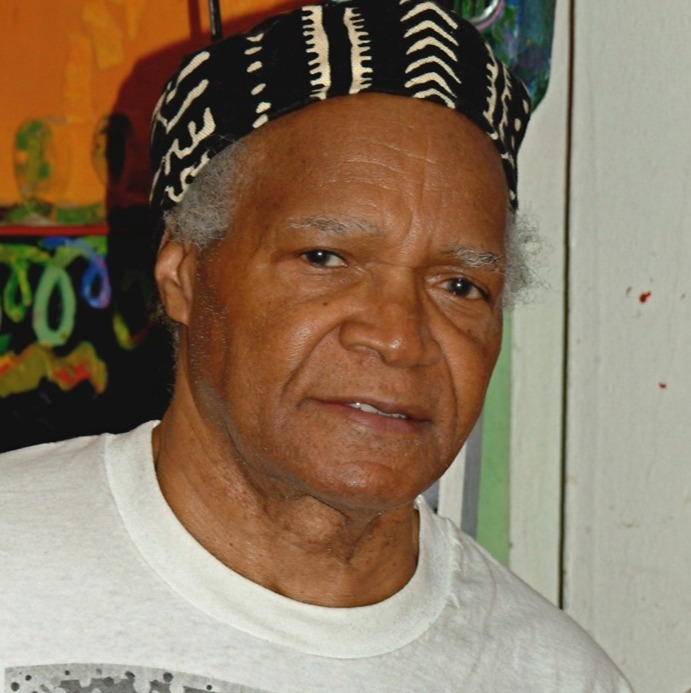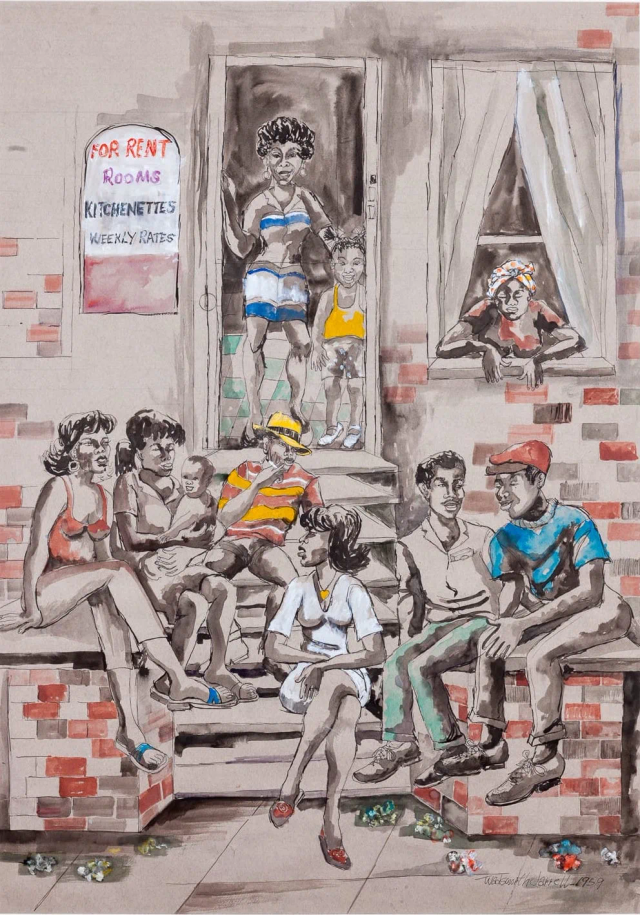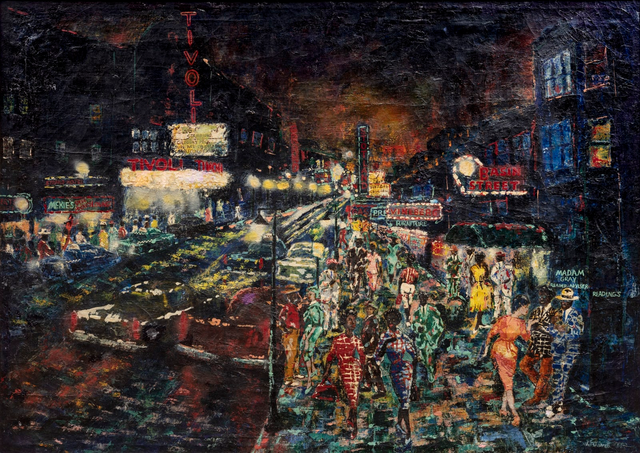
Wadsworth Jarrell
Wadsworth Jarrell, an American painter, sculptor, and printmaker, demonstrates remarkable versatility in his artistic endeavors.
Biography of Wadsworth Jarrell
Born in Albany, Georgia, in 1929, Jarrell's artistic talents emerged early in his life. During high school, he showcased his creativity by creating comic strips, contributing cartoons to the school paper, and crafting illustrations for various sports events. His passion for art blossomed further as he delved into oil painting. Following his graduation, Jarrell enlisted in the army and was stationed at Fort Polk, Louisiana, briefly serving in Korea. During his time at Fort Polk, he assumed the role of company artist, earning extra income by designing shirts and crafting paintings for his fellow soldiers.
Subsequently relocating to Chicago, Illinois, Jarrell pursued formal art education at the Art Institute of Chicago. Alongside his studies, he worked at the International Paint company, where he honed his skills in paint mixing. After completing his education, Jarrell began to gain recognition for his work, exhibiting at prestigious venues such as the Chicago Show at the Navy Pier and the Union League Show.
In the late 1960s, Jarrell established the WJ Studio and Gallery in Chicago, a creative hub where regional artists and musicians congregated under his and his wife Jae's guidance. His involvement with the Organization of Black American Culture (OBAC) led to the co-founding of AFRICOBRA (African Commune of Bad Relevant Artists) in 1969. AFRICOBRA gained international acclaim for its politically charged artwork and distinctive use of "coolade colors" in painting.
Transitioning into academia, Jarrell began teaching at Howard University in 1971, later relocating with his family to Washington, D.C. He pursued his Master of Fine Arts degree at Howard, focusing his studies on African culture, particularly the Senufo people. In 1977, Jarrell represented the United States as part of the American delegation to FESTAC '77 in Lagos, Nigeria, before eventually settling in Athens, Georgia, where he became an assistant professor at the University of Georgia.
Jarrell's contributions to art extended beyond traditional canvases; in 1982, he was commissioned by Westinghouse Electric Company to create a monumental three-hundred-foot mural for their Athens headquarters, aimed at boosting employee morale. He later assumed the role of painting professor for the University's Studies Abroad Program in 1986.
Presently residing and working in Cleveland, Jarrell continues to explore and depict the contemporary African American experience, leaving an indelible mark on the art world with his dynamic and socially relevant creations.
Evolution of Artistic Vision: The Journey of Wadsworth Jarrell
Wadsworth Jarrell's artistic journey was deeply influenced by his formal education and the vibrant tapestry of everyday life in black Chicago. Immersed in the dynamic scenes of horse racing, jazz clubs, and bustling bars, Jarrell often ventured out with a sketchpad in hand, capturing the essence of these experiences and translating them into his paintings.
The tumultuous era of Civil Rights struggles and social upheaval further fueled Jarrell's artistic expression. As riots erupted and the Black Power movement gained momentum, artists sought avenues to manifest black pride, self-determination, and self-reliance. In 1966, the Organization of Black American Culture (OBAC) was formed, leading to the creation of the iconic Wall of Respect. This mural celebrated African American heroes and cultural icons, with Jarrell contributing his distinctive portrayals of rhythm and blues legends like James Brown, B.B. King, and Billie Holiday.
In 1968, Jarrell and his wife established the WJ Studio and Gallery, which quickly became a focal point for discussions among artists like Jeff Donaldson, Barbara Jones-Hogu, and Gerald Williams. Together, they embarked on a quest to define a relevant black art aesthetic, culminating in the formation of COBRA (Coalition of Black Revolutionary Artists). Eventually, this group evolved into AfriCOBRA: the African Commune of Bad Relevant Artists. Jarrell's early works under this movement were characterized by their politically and socially charged themes, exemplified by pieces like "Homage to a Giant" (1970), a stirring tribute to Malcolm X symbolizing the ongoing struggle against oppression.
Jarrell's artistic evolution continued with his exploration of African art and culture, particularly the Senufo people, during the mid-1970s. Paintings such as "Prophecy," "Reorientation," and "Navaga" showcased human figures imbued with the stylistic elements of Senufo sculptures, reflecting Jarrell's deep engagement with African heritage and its influence on contemporary black identity.
Years:
Born in 1929
Country:
United States of America, Albany, Georgia
Gallery:


